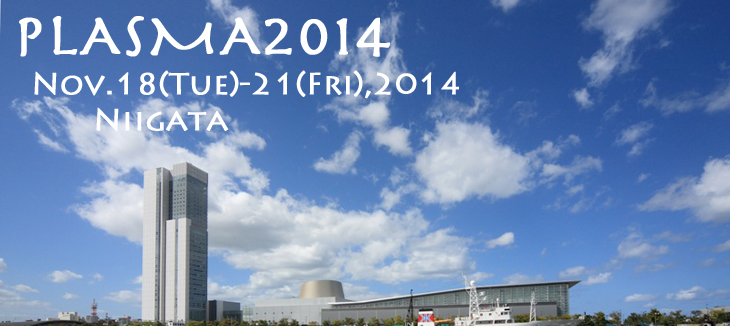Lecture Series
-
- *Tue. Nov. 18, 2014, afternoon
Room-G
Richard M. More,
SHORT PULSE LASER-TARGET INTERACTIONLBNL Lab Associate, NIFS Professor, retired (Japan), LLNL Retiree(USA)
Short-pulse lasers can easily produce high-density plasmas from solid targets. The target plasmas combine special phenomena of solid-state physics together with all the mysteries of dense plasma and warm dense matter, and open a new chapter of the physics of matter. This talk will survey the classical and quantum electrodynamics of ultra-short pulse target interaction. For short-pulse optical lasers, classical electrodynamics can describe most of the interaction phenomena and we specially describe solutions of Maxwell's equations for non-uniform surface conditions. In some cases light scattering can partially resolve target features smaller than the free-space wavelength of light. For short-pulse X-ray lasers, quantum electrodynamics is more appropriate and we use this theory to describe various phenomena including prediction of new types of coherent emission from X-ray laser targets.
Biography:
Richard More was among the first students at the San Diego campus of the University of California, where several of his teachers received the Nobel Prize for their research. Dr. More taught physics in University of Pittsburgh and worked on basic physics and inertial fusion science in the Lawrence Livermore National Laboratory; he also served as Group Leader and Division Leader. During 1999-2005, Dr. More worked as教授 in the核融合科学研究所in Toki, Gifu, Japan, not far from Mt. Ontake, and taught special courses in Nagoya, Kyushu, and Osaka Universities. Since then he has been a consultant and/or participating guest researcher of Lawrence Berkeley Lab, Lawrence Livermore Lab and Sandia National Laboratory in Albuquerque, NM. His research includes material properties such as the equation of state of hot matter and laser-target interaction physics. - *Wed. Nov. 19, 2014, afternoon
Room-G
Karl-Heinz RAEDLER,
The generation of magnetic fields in turbulent plasmas of cosmic bodiesProfessor, Retired from the Astrophysical Institute Potsdam, Germany
The focus of the lecture is on the mean-field dynamo theory of cosmic magnetic fields. The central element of this theory is the mean electromotive force due to the velocity and magnetic field fluctuations in turbulent electrically conducting fluids, which depend in general in a nonlinear way on the mean velocity and the mean magnetic field. Within this framework several types of dynamo models applying to cosmic objects have been developed. Considerable progress has been achieved in the last years in determining the mean electromotive force in realistic situations and so in the elaboration of mean-field dynamo models.
Biography:
Until his retirement in 2000 he has been working as director at the Astrophysical Institute Potsdam and professor for astrophysics at the University of Potsdam, Germany. He is one of the founders of mean-field electrodynamics and mean-field magnetohydrodynamics in turbulently moving conducting matter, which proved to be a key to the understanding of magnetic fields of cosmic bodies. - *Thu. Nov. 20, 2014, afternoon
Room-G
若山 俊隆,
光による形状計測と偏光計測の基礎埼玉医科大学保健医療学部医用生体工学科 准教授
ものづくりの世界では、形状計測はもはや必要不可欠な存在になっていて、ナノメートルの構造物から数メートル級の構造物までを測定したいと様々な要求にあふれている。それぞれのスケールに応じて測定法が異なる。本稿では光三次元形状計測技術の基礎的な方法(光セクショニング法、格子パターン投影法、干渉計)をいくつか紹介し、その応用を述べる。
第2稿目は、第1稿目とは異なり、偏光に関する基本的な内容を述べる。レーザーを代表とするその偏光は身近なものから宇宙を探索するプローブにさえなっているが、その細かい内容はあまり良く知られているとは言えない。光の本質である偏光の表記法(ポアンカレ球)や計算法(ジョーンズ行列、ミュラー行列、ストークスパラメータなど)とその計測方法(回転偏光子法、回転位相子法、光弾性法)を中心に述べる。
Biography:
2006年3月に、東京農工大学 大学院 工学教育部 博士後期課程 修了 博士(工学)を取得。2003年-2006年、同大学にて日本学術振興会特別研究員(DC1)、2006年4月、埼玉医科大学 保健医療学部 助手。2012年5月より同大学 准教授。 偏光と光三次元形状計測に関する研究開発に従事。現在の主な研究内容は、形状計測や偏光計測を中心にその工学および医学応用を行っている。
- *Tue. Nov. 18, 2014, afternoon
